The Seven Stars of Chappie James and Daniel James, III
By: Jim Fausone
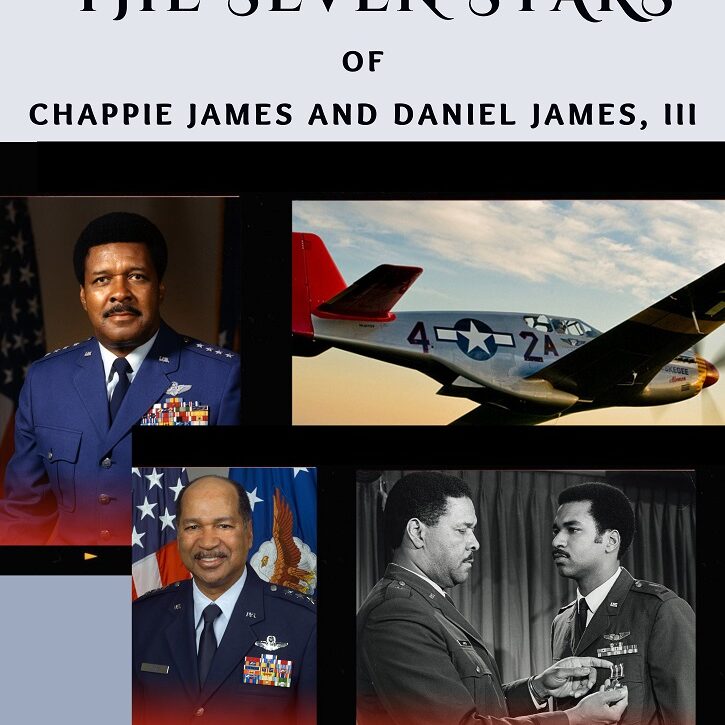
Few things are harder than following in your father's footsteps, whether you are a lawyer, doctor, athlete, or General. Daniel "Chappie" James, Jr. set a difficult path for his son Daniel James, III to walk and prove he was as talented as his legendary father. Both of these men were trailblazers and proved their individual skill sets and love of country. Daniel James, Jr., as an African-American male, broke many barriers and proved to be a fighting legend. His son, Daniel James III, proved not only a capable pilot but a skilled leader of military organizations.
The James family is planted in Pensacola, Florida. The family is rooted in the panhandle of Florida near Naval Air Station Pensacola. This area has long been strategic for military purposes in French, Spanish, and early American military history. In the early 1900s, the Navy Department was warming up to the possibilities of naval aviation. By 1914, Pensacola began to have a naval aviation presence that lasted over 100 years. Upon the entry of the United States into World War I on 6 April 1917, Pensacola, the Navy's only air station, had 38 naval aviators, 163 enlisted men trained in aviation support, and 54 fixed-wing aircraft. Two years later, by the signing of the armistice in November 1918, the air station, had 438 officers and 5,538 enlisted men and had trained 1,000 naval aviators. So many Annapolis graduates trained at Pensacola it became known as the "Annapolis of the Air."
The base is home to the National Naval Aviation Museum. The Museum seeks to ignite the imagination of future aviators. The infamous U.S. Navy Blue Angels make Pensacola its base during the air show season. Many a young person has stood in awe watching the acrobatics of the Blue Angels. Living in greater Pensacola, Daniel James, Jr. was no different. He was amazed at the takeoffs, moves, and landings that he could watch from the house. His imagination was ignited.
General Daniel "Chappie" James, Jr.
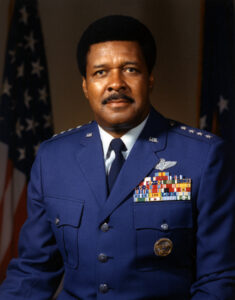
"Chappie" was a nickname young Daniel was awarded by the family. It is reported his brother gave it to him and that it is a derivative of Charles. Chappie stuck with him his entire life and was a term of endearment and distinguished him from his father and son. Chappie was from a large African American family and was the youngest of 17 children. His father was a laborer at a gas company and his Mom was a homeschool teacher by necessity. Chappie was born in Pensacola in February 1920.
The decade before his birth was a period known as the Great Migration (1910-1920) when thousands of Black men moved north to industrialized cities for jobs. World War I demanded more factory workers. The NAACP, which was formed in 1909, was demanding more rights and protections from racial hatred and discrimination. Jim Crow laws mandating separation of the races in every aspect of public life were common in the South, including Florida. In fact, Florida laws in the 1920s made it unlawful and criminal for white teachers to teach Blacks or in Black schools. In that world, the prospects for the 17th child of Daniel James were not great.
Starting with humble beginnings, Chappie had a number of things on his side including family support, intellect, size, and swagger. His mother decided to teach her children at home herself because the segregated public school was so bad. She figured she could do a better job. As she attracted other children, it became a neighborhood grade school which she ran for 52 years until passing away at age 82. She instilled in all her students to never quit. Chappie learned that lesson well.
Chappie was a big strapping young man, at 6'4" and 250 lbs., who played high school football well enough to earn a scholarship to Tuskegee Institute in Alabama. The institute was founded in 1881. A century later it became known as Tuskegee University. As the Tuskegee University website states its historical mission:
"The University is rooted in a history of successfully educating African Americans to understand themselves and their society against the background of their total cultural heritage and the promise of their individual and collective future... A major outcome we seek is to prepare them to play effective professional and leadership roles in society and to become productive citizens in the national and world community. Tuskegee University continues to be dedicated to these broad aims."
So Chappie arrived at one of the 14 historically Black colleges in Alabama. His home state of Florida only had four and none in Pensacola. He is a graduate of this prestigious college but there is some discrepancy as to when the degree was awarded. Some reports have him graduating with a B.A. in physical education in 1942. According to Air Force historian Howard E. Halvorsen, James was expelled from his academic studies at Tuskegee his senior year for going on too many "escapades" that were frowned upon by the institution. Halvorsen claims James received his degree in 1969 when the school awarded him the degree based on the many credit hours he earned during his military career.
Tuskegee, Alabama was a small town in the 1940s. It had a population of about 4,000 at a time when the state had a population of about 2.6 million people. A milestone in his life, James met his wife, Dorothy Watkins, while they were both enrolled at Tuskegee. They married on the campus in November 1942 and had a daughter and two sons. Another life-shaping event in Tuskegee was Chappie's attending and graduating from the Civilian Pilot Training Program (CPTP) offered by the Institute. This was one of the first training opportunities offered to minorities. The first students completed their instructions in May 1940.
Chappie would have been trained by Charles "Chief" Anderson, a civilian self-taught pilot. Anderson was born in 1907 in Bryn Mawr, Pennsylvania, and was fascinated by flight. Anderson is believed to be the first Black commercial pilot in the United States when he earned his license in 1932. He was part of the duo that made the first Black pilot crossing of the United States. He was hired by the Tuskegee Institute to head its Civilian Pilot Training program in 1940. He was the most famous Black pilot of that time and flew Mrs. Eleanor Roosevelt over Alabama generating a national buzz.
The importance of this program to the pending war effort, as well as the African-American student pilots, cannot be understated. The Tuskegee Airmen website explains:
"The CPTP's purpose was to train approximately 20,000 pilots each year in order to prepare for the believed impending global conflict. As the possibility of war became more of a reality, the United States became increasingly desperate for pilots. In an effort to recruit as many potential pilots as possible, the program accepted African Americans and women. This decision was a major step in the direction of desegregation and civil rights. By 1944, the CPTP had trained 435,165 pilots at thousands of different universities and flight schools. One such university was the Tuskegee Institute in Tuskegee, Alabama. The institute only trained African Americans, but the training program was rigorous. The Tuskegee Institute would eventually train and graduate approximately 2,000 students."
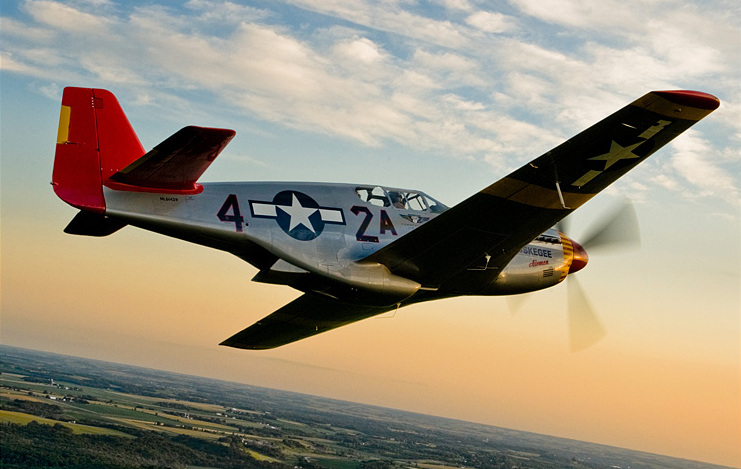
Chappie remained at the CPTP as an instructor for the Army Air Corps until 1943 when he earned his commission in July as a second lieutenant. He became one of the infamous "Tuskegee Airmen". These airmen would help win WWII by completing 15,000 sorties. The unit received a Distinguished Unit Citation. Their success motivated President Harry Truman to abolish racial discrimination in the military with Executive Order 9981. The Tuskegee Airmen received a Congressional Gold Medal from President George W. Bush in 2007.
It was not easy for a Black man to be in the military in the 1940s and the 1950s. The World Wars were over and the need for a strong military was in question. However, the instability of the world was shown in June 1950 when the Korean War began. For the next three years, the Korean War was largely ignored, but for the men who fought in Korea, it was cold and brutal. Battles like Inchon, Bloody Ridge, and Pusan are forever in the memories of Marine and Army veterans to this day.
Chappie James left for Korea in 1950 and flew 101 combat missions. The opponents in this air war involved Soviet pilots masquerading as Chinese and Koreans flying MIGs. The U.S. pilots downed at least 500 MIGs at the loss of 78 F-86s. Chappie James earned his chops in Korea flying the F-51 Mustang and the F-80 airframe. The Mustang was a holdover from WWII and prized for its maneuverability.
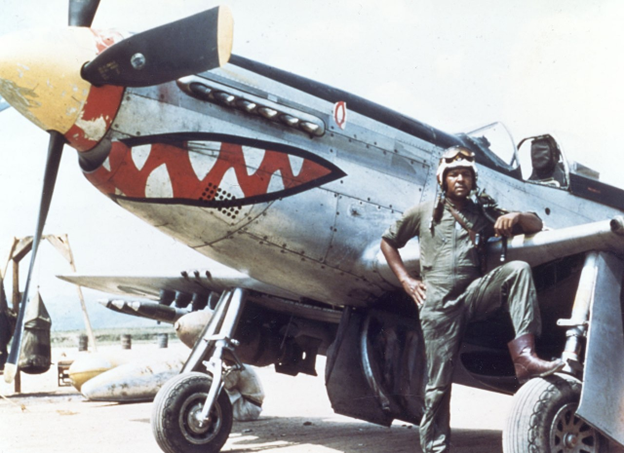
Clearly, the thrill, power, respect, and sense of accomplishment flying in Korea gave Chappie James purpose and a desire to stay in the Air Force. He rotated back to the States after the Korean tour and moved up the ranks in responsibility. He was making a name for himself in the wider non-military community with the 1954 award of "Young Man of the Year" in the Massachusetts Junior Chamber of Commerce. He also was a contestant that year on the television show, "What's My Line?"
He closed the decade out with assignments in Washington, D.C., and started the 1960s as director of operations in RAF Bentwaters, England. An overseas assignment would again materialize for him in 1966 when sent to Ubon Royal Thai Air Force Base, Thailand. The Ubon Air Base was a front-line facility of the USAF during the Vietnam War. Thousands of hours and aircraft flew out of Ubon in support of American air efforts in Vietnam.
Chappie was wing vice commander for a highly respected wing commander, Colonel Robin Olds, who was a double ace in two tours over Europe in WWII. Olds was a bona fide leader and fighter jock. He was someone Chappie could respect and admire. This dynamic duo was nicknamed "Blackman and Robin" as a take-off on the popular tv show, Batman. James flew 78 combat missions into North Vietnam, many in the Hanoi/Haiphong area.
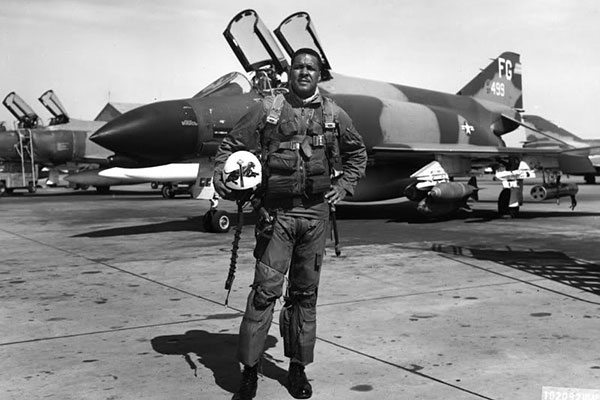
During Vietnam, Air Force Gen. Daniel "Chappie" James, Jr., flew 78 combat missions, including the infamous Operation Bolo mission in which seven communist MIG-21 aircraft were destroyed. Operation Bolo was a deception-based mission intended to trick enemy fighter aircraft into battle where American fighters held the advantage. This operation pitted the U.S. F-4 Phantom II against the MIG-21 and, because of the operation, the enemy re-evaluated their MIG-21 strategy and deployment.
James participated in "Operation Bolo," a planned engagement by Olds to attack MIGs. Seven Communist MIG-21s were destroyed, the highest total kill of any mission during the Vietnam War. However, James did not score a victory himself and almost became a casualty. As he reported:
"At 15:04 my flight was attacked by three MIGs, two from '10 o'clock' and one from '6 o'clock´. Initially, I didn't see this last one because I had been concentrating on those approaching head-on. My WSO excitedly warned me about this rapidly approaching MIG, which was within firing range of my #3 and #4. I hesitated a while before interrupting my attack against the two MIGs in front because I had seen the 'Olds' flight passing below us a few seconds before. I thought that the plane seen by my WSO could be one of them. Despite that, I suddenly turned left and then right, and caught sight of the third MIG. I ordered my numbers 3 and 4 to break right. As they did so, the MIG broke left for some mysterious reason and for a split second we were side by side. We were so close that, besides the red stars in his wings, I could clearly see the pilot's face. I began a horizontal barrel roll to get away from him and into an attack position, once in position, I launched a Sidewinder. The missile missed because the evading MIG broke left at full throttle. But when he did it, he put himself in the line of fire of my number 2, Captain Everett T. Raspberry. I ordered him to follow the prey because the two aircraft that I initially saw had been placed in my forward sector. I was in an advantageous position, so I fired two AIM-9s against them in a quick sequence, and I turned to place myself as the wingman of my #2, Captain Raspberry. […] I kept on descending beside Captain Raspberry and I remember that I thought that he was still out of the optimal launching envelope. But he performed a barrel roll that placed him in a perfect position again and he launched an AIM-9 which hit against the tail section of the MIG-21. It was shaken violently and later fell in a slow, almost plane spin.”
This hair-raising, adrenaline-pumping dog fight confirmed his faith in the F-4 and in the men with which he flew. While Vietnam was considered a debacle by some, the vitriol was primarily focused on the U.S. Army. In contrast, the Air Force acquitted itself well and many officers, like Chappie James, learned valuable fighting skills and tactics. As a man who had been strapped in the cockpit of fighter jets for decades, Chappie James developed a sense of patriotism and pride that ran counter to the times. He often found himself having to bridge divided communities, civilian and military, as well as Black and White.
At one point he supported the Black Panthers of the 1960s but his position evolved as the civil unrest became more violent. James was the target of some who felt he was an "Uncle Tom" or, as he stated, an "Oreo." This was a time when Black men did not rise to the top of any industry. The memories of race mutiny and riots in the Navy and Army were fresh. Chappie James pinned his fourth star over a decade before General Colin Powell. Powell would also be harassed by some for being an Uncle Tom or an Oreo. But both great men and generals simply focused on action to prove value and critics wrong. James' fourth star was awarded in September 1975. Powell would receive that recognition in April 1989.
There is always some mixture of fact and myth with military legends. One surrounding Chappie was his faceoff with Libyan strongman Muammar Qaddafi. It occurred at Wheelus Air Base, Libya, in 1970 when James was commander of the 7272nd Fighter Training Wing. The base was in the process of being turned over to the Libyans, and Qaddafi thought he could push his way in to seize even more land and equipment. But James was not to be bullied. He had the base's gates closed to not let anyone else in, and went face-to-face with Qaddafi. The dictator was known for his swagger and sidearms. James told him to "Move his hand away" from his holster, and he later said that if Qaddafi hadn't done so and tried to pull his gun, James would have gone for his holstered .45; he quipped, Qaddafi's hand "would never have cleared his holster." The standoff ended without any violence. Qaddafi would remain a thorn in the side of American politicians and military officers for decades to come before his death in October 2011.
Chappie came back to the States after Vietnam and held various commands and gathered stars along the way. On September 1, 1975, James was promoted to the four-star rank of General (O-10), becoming the highest-ranking African-American in the history of the United States military to that date. He was assigned as commander in chief of NORAD/ADCOM at Peterson Air Force Base, Colorado. In these dual capacities, he had operational command of all United States and Canadian strategic aerospace defense forces. On December 6, 1977, he assumed duty as special assistant to the Chief of Staff, the U.S. Air Force.
Within two months, he retired on February 1, 1978, as a result of a heart attack. Life in the military was over and within weeks so was his life. James died of a heart attack on February 25, 1978, just two weeks after his 58th birthday and three weeks following his retirement from the Air Force. His funeral was befitting a military hero who had received awards such as the Distinguished Flying Cross, with two bronze oak leaf clusters, Defense Distinguished Service Medal, U.S. Air Force Command Pilot Badge, and Air Force Distinguished Service Medal with bronze oak leaf cluster and many others.
Lt. Gen. Daniel James, III
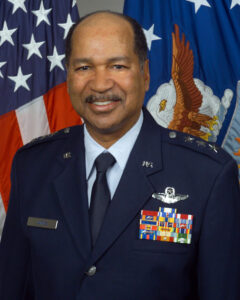
David Baldacci wrote in No Man's Land: "The life of an Army brat was not easy. The life of a son of an Army legend could sometimes be pure hell... People either assumed you were as good and talented and brave as your legendary father and never allowed you to fall below that supremely high bar, or they assumed you were nowhere near as good as he was because it was a rare family that could spawn multiple fighting legends. Thus you were instantly relegated to being a parasite riding your father's coattails. Nothing you achieved would ever be because of what you did, but only because of who your father was."
Daniel James III was born in Tuskegee, Alabama, on September 7, 1945. He absorbed the spirit of the Tuskegee Airman and his father's military sense of duty. He did not inherit his father's athletic prowess. He took an Air Force ROTC scholarship to the University of Arizona where he graduated in 1968 with a B.A. in Psychology. This was a time of community tumult over race issues and the Vietnam War. It was not easy to be in ROTC at the time, but it kept a young man out of the draft. However, Vietnam was in the future for any trained pilot.
James completed pilot training in June 1968. He served two tours in Southeast Asia having served as Forward Air Controller and F-4 Phantom Aircraft Commander. His father Chappie was undoubtedly watching over his assignments. James flew 500 combat hours in Southeast Asia and earned two Distinguished Flying Crosses. Other assignments include T-38 instructor pilot; Air Staff Action Officer, Headquarters USAF; and enemy weapons and tactics instructor pilot in the prestigious aggressor training squadrons at Nellis Air Force Base. He accumulated approximately 4,000 hours in fighter and trainer aircraft.
He moved from active duty to the Air National Guard. He went to Air Command and Staff College in 1981 and National Security Management Course in 1992. His first star was awarded in September 1996. He became the adjutant General of the Texas Air National Guard in 1995. He became a Major General in October 1998.
Daniel James III helped shepherd the Texas ANG and then the federal Air National Guard in the time immediately after 9/11. The Air Guard flew missions on September 11, 2001, to protect the Pentagon and the Country's airspace. The Air Guard website history explains, "Within 24 hours of the terrorist attacks, 34 ANG fighter units across the country had launched aircraft. Fifteen of the units flew 179 combat air patrols, presidential escorts, and Federal Emergency Management Agency support missions. In addition, ANG tanker, airlift, and rescue units flew scores of sorties that day... Continuous combat air patrols were maintained over Washington, D.C., and New York City until the spring of 2002. The bulk of those missions, conducted under the auspices of Operation Noble Eagle, were flown by Air Guard pilots."
Having demonstrated the necessary leadership and financial experience, he was selected for more responsibility. President George W. Bush nominated, and the Senate confirmed, Daniel James III as the Air National Guard Director in Washington, D.C., in 2002. Like his father, he accomplished a first - Daniel III was the first African-American to become director of the Air National Guard.
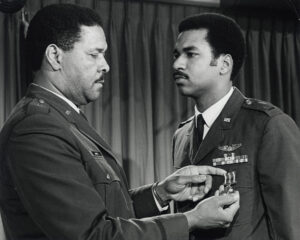
The emphasis on a cohesive Active duty and National Guard duty air structure became clear and necessary after 9/11. The Director of the Air National Guard is responsible for formulating, developing, and coordinating all policies, plans, and programs affecting more than 106,800 Guard members in more than 88 flying units and 200 geographically separated units throughout the United States, the District of Columbia, Puerto Rico, Guam and the Virgin Islands. The need to successfully integrate the Guard flying units into active duty rotations in Iraq and Afghanistan was a top mission for a Director of the Air National Guard Director. James was at the beginning of that important integration.
He was promoted to Lieutenant General in June 2003. He retired from the United States Air Force in June 2006. He received numerous awards and decorations, including the Air Force Distinguished Flying Cross with oak leaf cluster, the Legion of Merit, and the Distinguished Flying Cross with oak leaf clusters.
He followed his father into the U.S. Air Force and unfortunately into death. he died on August 1, 2017, of congestive heart failure at the age of 72.
About the Author
Jim Fausone is a partner with Legal Help For Veterans, PLLC, with over twenty years of experience helping veterans apply for service-connected disability benefits and starting their claims, appealing VA decisions, and filing claims for an increased disability rating so veterans can receive a higher level of benefits.
If you were denied service connection or benefits for any service-connected disease, our firm can help. We can also put you and your family in touch with other critical resources to ensure you receive the treatment you deserve.
Give us a call at (800) 693-4800 or visit us online at www.LegalHelpForVeterans.com.
This electronic book is available for free download and printing from www.homeofheroes.com. You may print and distribute in quantity for all non-profit, and educational purposes.
Copyright © 2018 by Legal Help for Veterans, PLLC
ALL RIGHTS RESERVED



